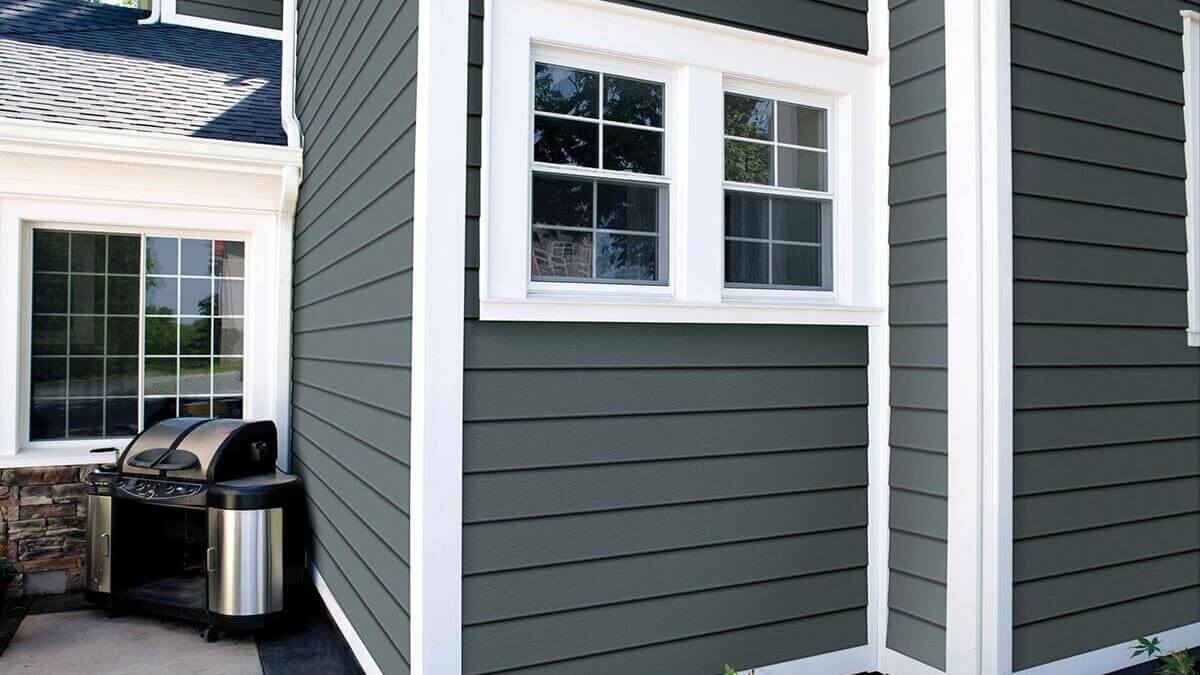Introduction
When it comes to enhancing your home’s energy efficiency, exterior siding plays a crucial role. The right siding can help regulate indoor temperatures, reduce energy consumption, and lower utility bills. Here’s how different types of exterior siding contribute to improving energy efficiency in your home.
We at PLJ are the leaders in carpentry services in Cape Cod, MA,and specialists in siding services.

Click here and get a free quote for your siding project with PLJ Carpentry
1. Insulated Siding
- Description: Insulated siding comes with a layer of foam insulation integrated into the panels, providing an extra barrier against heat transfer.
- Benefits:
- Reduces heat loss during winter and keeps the home cooler in summer.
- Helps maintain consistent indoor temperatures, reducing the strain on HVAC systems.
- Provides better soundproofing.
- Best For: Homes in regions with extreme temperatures, as it helps maintain comfort year-round.
2. Vinyl Siding with Insulation
- Description: Vinyl siding is a popular option, and when paired with foam insulation, it enhances thermal efficiency.
- Benefits:
- Insulated vinyl siding reduces energy loss by trapping air between the insulation and the siding.
- It is low-maintenance and resistant to moisture, preventing mold growth.
- Vinyl’s durability makes it a long-lasting energy-efficient choice.
- Best For: Homeowners seeking a balance between cost and energy savings, especially in moderate climates.
3. Fiber Cement Siding
- Description: Fiber cement is a blend of wood fibers, sand, and cement that offers strength and durability. It can also be an energy-efficient choice when properly installed with a layer of insulation.
- Benefits:
- Acts as an effective barrier against heat and moisture, improving insulation.
- Offers excellent resistance to weather extremes, protecting your home from energy loss.
- It is fire-resistant, making it a safer option for energy efficiency in certain areas.
Best For: Homeowners in regions with harsh weather conditions who want long-term durability and energy efficiency.
4. Wood Siding with Insulation
- Description: Wood is a natural insulator, and when combined with proper insulation techniques, it can improve energy efficiency.
- Benefits:
- Wood naturally offers good thermal insulation, helping to regulate indoor temperatures.
- Adding insulation beneath wood siding amplifies its energy-saving potential.
- Wood is an eco-friendly material, which is an attractive feature for environmentally conscious homeowners.
- Best For: Those looking for a traditional aesthetic with energy-saving benefits.
5. Metal Siding
- Description: While metal siding (such as aluminum or steel) isn’t typically known for its insulating properties, new technologies allow metal siding to be paired with insulating foam to improve energy efficiency.
- Benefits:
- Reflects sunlight, reducing heat absorption and keeping homes cooler in hot climates.
- Insulated metal siding systems can significantly improve energy efficiency by providing an extra layer of insulation.
- It’s durable, weather-resistant, and requires minimal maintenance.
- Best For: Homes in warmer climates or areas that require low-maintenance, energy-efficient options.
6. Stucco Siding
- Description: Stucco is a cement-based siding that, when installed with insulation, provides an effective thermal barrier.
- Benefits:
- The thick layers of stucco provide good insulation, keeping the interior warm in the winter and cool in the summer.
- It can be combined with external foam insulation to enhance energy efficiency.
- Stucco also provides good sound insulation, which can contribute to overall comfort.
- Best For: Homes in temperate climates where both insulation and aesthetics are important.
7. Installing Reflective or Cool Siding
- Description: Reflective or cool siding is designed with coatings that reflect heat away from the home, reducing cooling costs during hot weather.
- Benefits:
- Reflects a significant amount of solar radiation, keeping homes cooler and reducing the need for air conditioning.
- Ideal for homes in areas with hot, sunny climates.
- Can be applied to various siding materials, including metal, vinyl, and asphalt.
- Best For: Homes in regions with intense sunlight or high summer temperatures.
8. Proper Installation and Maintenance
- Description: Proper installation of siding is key to maximizing its energy efficiency. Gaps, cracks, or improperly sealed siding can cause energy loss.
- Benefits:
- Ensures the siding performs at its best, reducing drafts and heat loss.
- Regular maintenance, such as sealing cracks and cleaning the siding, can maintain its insulating properties.
- Ensures that insulation remains effective for a longer period.
- Best For: All homes, as proper installation and maintenance can enhance energy efficiency regardless of the material used.
Additional Tips for Boosting Energy Efficiency with Siding
- Seal Gaps: Ensure all gaps between the siding and windows, doors, and other openings are sealed properly to prevent air leaks.
- Add Insulation: Consider adding or upgrading the insulation behind the siding for added efficiency.
- Use High-Performance Windows and Doors: Combine energy-efficient siding with energy-efficient windows and doors for maximum benefits.
- Regularly Inspect and Maintain: Regularly check for damage, wear, or gaps in your siding to ensure it continues to perform effectively.
Conclusion
Upgrading your home’s siding with energy-efficient materials can significantly improve comfort while reducing energy costs. Whether you opt for insulated siding, fiber cement, or reflective metal, the right choice can help you maintain consistent indoor temperatures, reduce environmental impact, and enhance your home’s curb appeal. Always consider the climate, maintenance requirements, and long-term benefits when choosing the ideal siding for your home.

